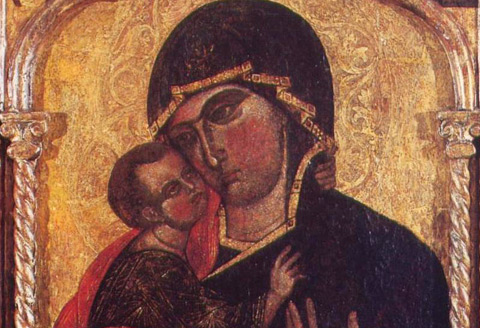Zadar, November 1996
The exhibition presented the conservation treatments of two paintings from Zadar, which were carried out in 1995 and 1996 by the Croatian Conservation Institute, then called Institute for the Restoration of Works of Art.

The Small Painting from the exhibition title is known as the Ugljan Triptych, a piece that was found by accident in 1954. Art-historian Ivo Petricioli attributed it to the Venetian-Adriatic Late-Byzantine painting of the beginning of the 14th century. In its central field, inside a carved frame, the triptych carries a depiction of the Virgin and Child of the iconographic type of Eleusa. The wings are painted with a vertical sequence of scenes from the Life of Christ. In spite of its iconographic conservatism, this very valuable work of art introduces more expressive Gothic innovations in the way the figures are treated and the composition is built. The painting is among the most valuable exhibits of the Permanent Exhibition of Religious Art in Zadar.
The Large Painting was attributed to the Venetian Renaissance master Lazzaro Bastiani. It is one of the most important works of art from Zadar’s churches and treasuries, standing out with its large format (551x295 cm). The lavish narrative composition is divided into the celestial and the terrestrial zone, with separate groups of figures in hierarchical relations, inscriptions and symbols. For a long time, the painting had presented a challenge for researchers, until recent scholarship defined the iconographic scheme of the Large Painting as Our Lady of Mercy. The painting has been a subject to numerous overpaintings, and after several years of conservation treatments and their presentations, it was permanently exhibited at the sacristy of the Franciscan Church in Zadar.

